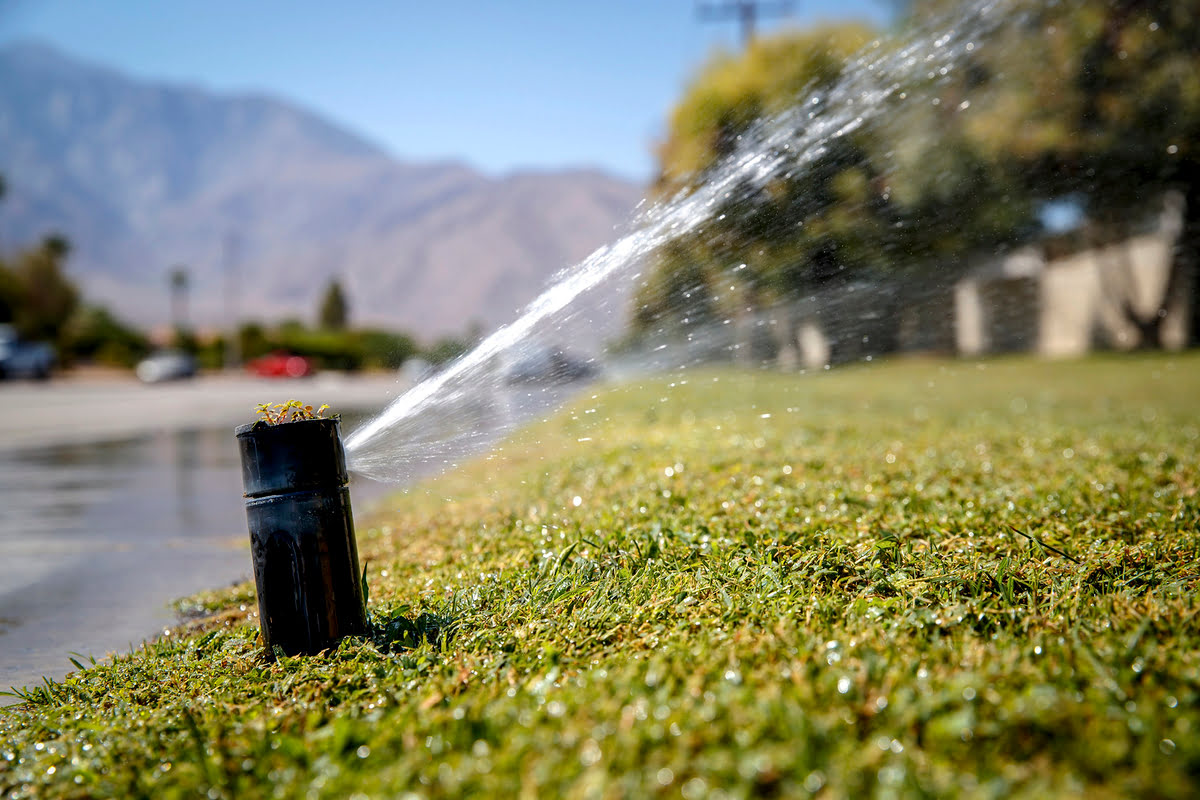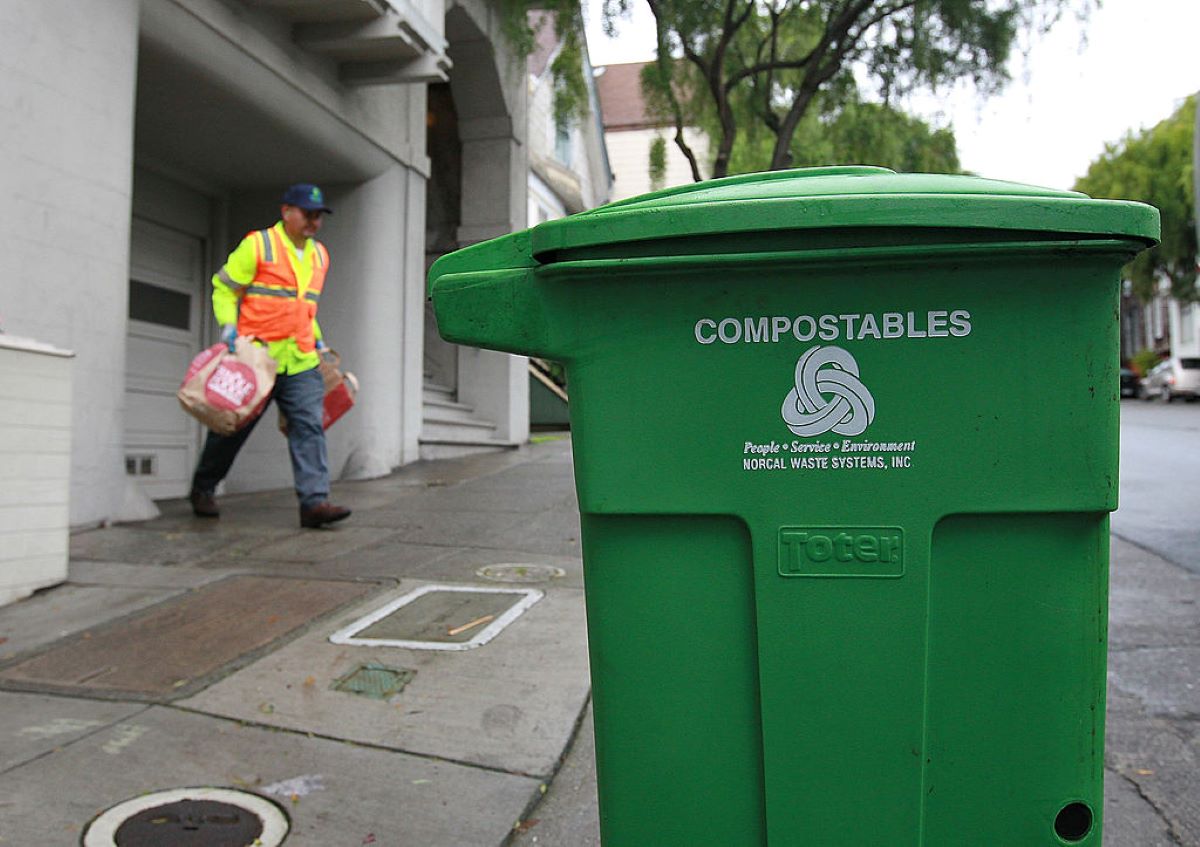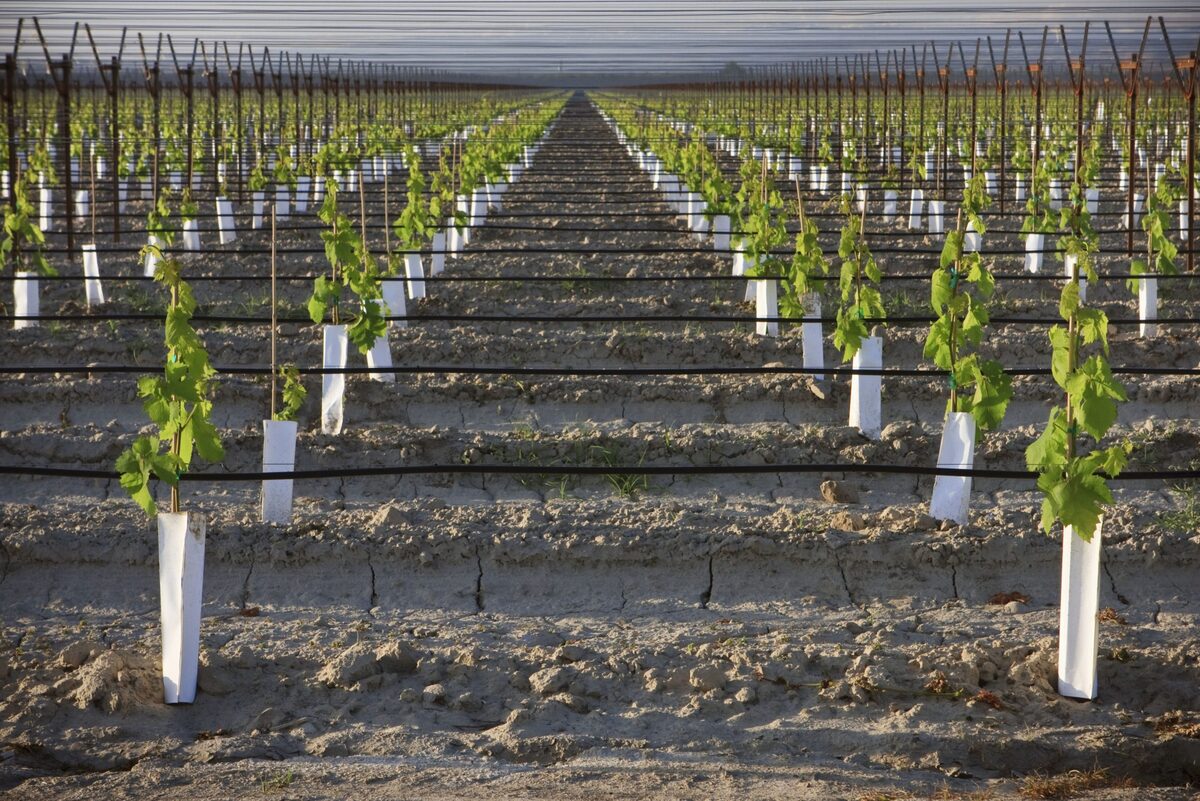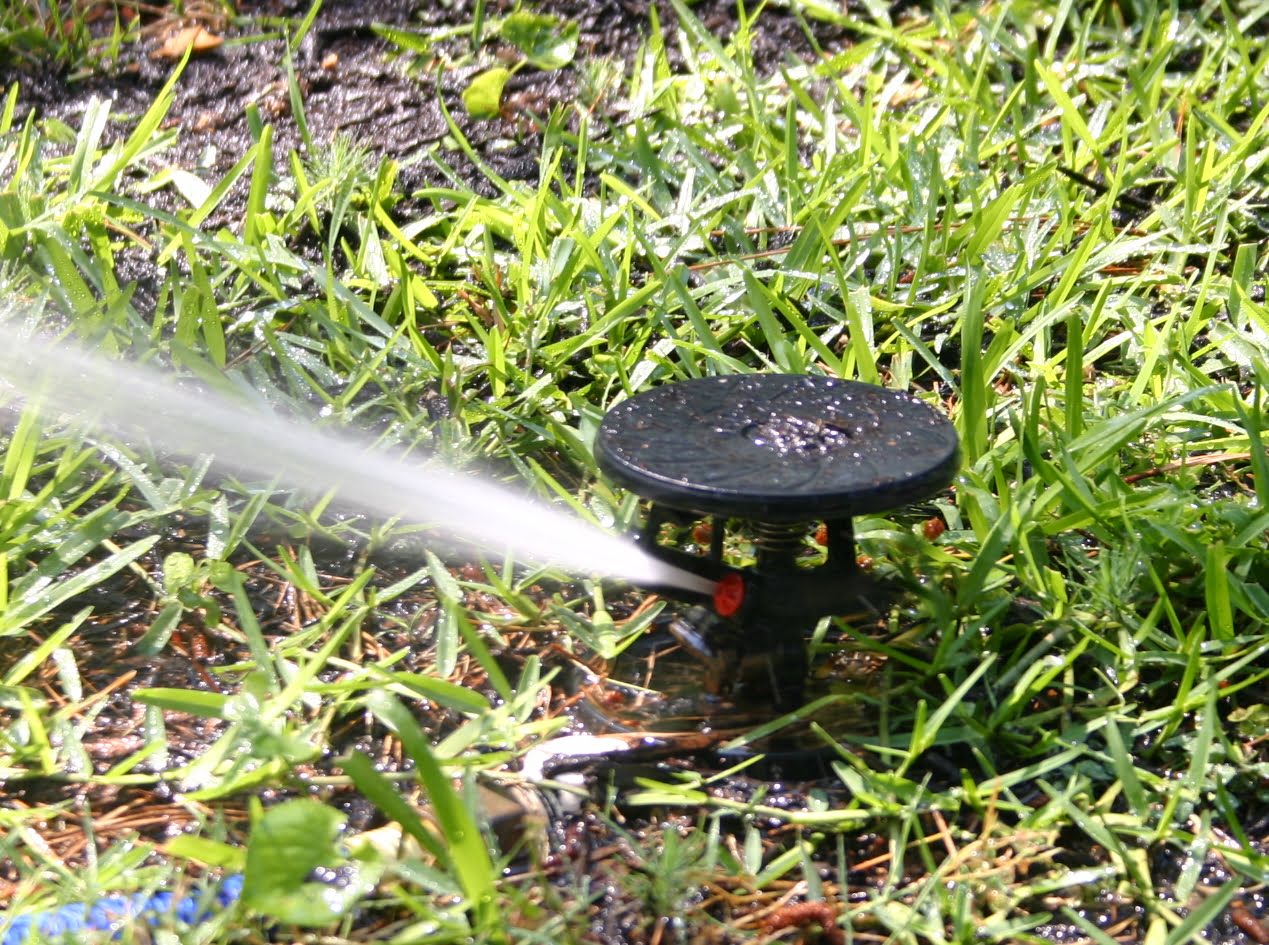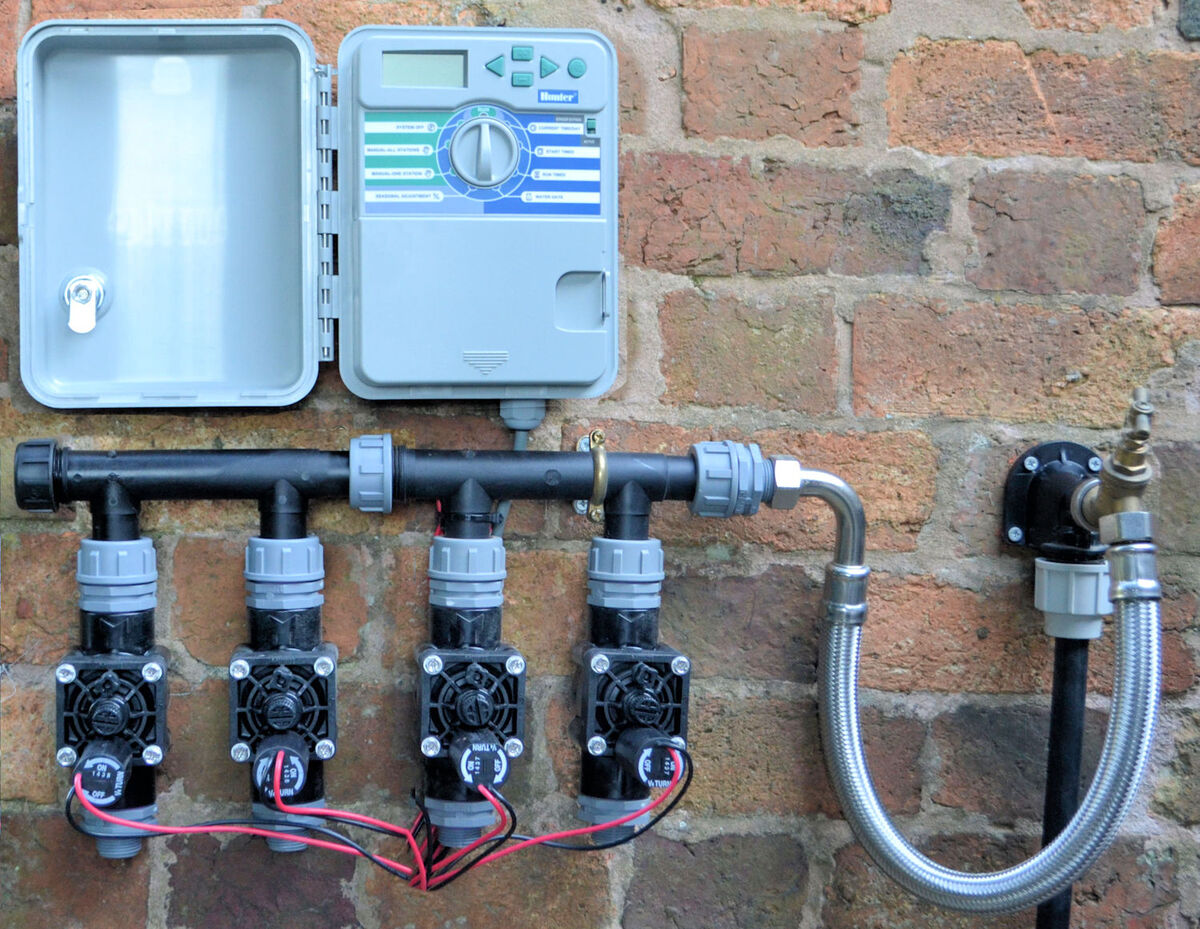Home>Gardening News and Trends>Latest News>What Is The Irrigation System That Provides Water For The Central Valley In California
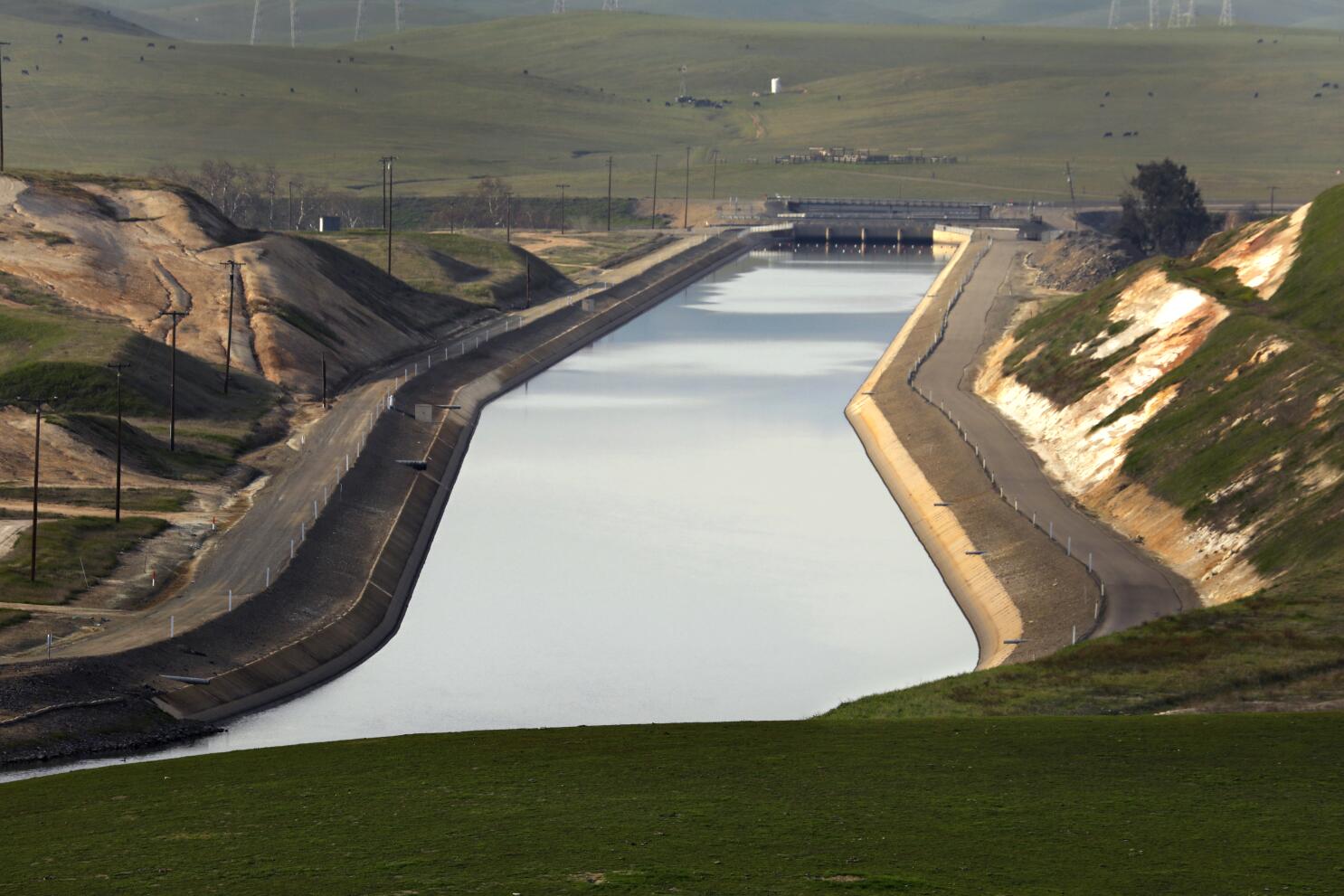

Latest News
What Is The Irrigation System That Provides Water For The Central Valley In California
Published: November 16, 2023
Discover the latest news about the irrigation system that supplies water to the Central Valley in California
(Many of the links in this article redirect to a specific reviewed product. Your purchase of these products through affiliate links helps to generate commission for Chicagolandgardening.com, at no extra cost. Learn more)
Table of Contents
- Introduction
- Overview of the Central Valley in California
- Importance of the Irrigation System in the Central Valley
- Historical Development of the Irrigation System
- Primary Sources of Water for the Central Valley
- The Central Valley Project
- The California State Water Project
- Canal and Delivery Systems in the Central Valley
- Challenges and Issues with the Irrigation System
- Future of the Irrigation System in the Central Valley
- Conclusion
Introduction
The Central Valley in California is not only one of the largest agricultural regions in the United States, but it also serves as a vital source of fruits, vegetables, and nuts for the entire country. Spanning over 400 miles, this fertile valley has long been known for its agricultural productivity. However, the success of the Central Valley is attributed to a critical component that often goes unnoticed: the irrigation system.
The irrigation system in the Central Valley plays a pivotal role in providing water to sustain the agricultural operations in the region. It ensures that crops receive the necessary amount of water at the right time, leading to higher yields and healthier produce. Without the irrigation system, the arid climate of California would pose significant challenges for sustaining the agriculture industry.
Over the years, the irrigation system has evolved and grown in response to the increasing demands of the agricultural sector in the Central Valley. It has transformed the landscape and made it possible to cultivate a wide variety of crops. This article will delve into the historical development, primary sources of water, canal and delivery systems, challenges, and the future outlook of the irrigation system in the Central Valley.
By understanding the importance and functioning of the irrigation system, we can gain a deeper appreciation for the remarkable achievement of sustaining such a high level of agricultural production in an arid region like the Central Valley. Let’s explore the intricate workings of this crucial system and the impact it has on the economy, environment, and food supply of not only California but the entire nation.
Overview of the Central Valley in California
The Central Valley, located in the heart of California, is a vast and fertile region that stretches approximately 450 miles from north to south. It is bordered by the Sierra Nevada Mountains in the east and the Coast Ranges in the west. This expansive valley encompasses two major regions: the Sacramento Valley in the north and the San Joaquin Valley in the south.
The Central Valley is renowned for its rich soil, moderate climate, and abundant sunshine, making it an ideal location for agriculture. In fact, it is often referred to as the “breadbasket” of the United States due to its significant contribution to the nation’s food supply. The valley is home to a diverse range of crops, including fruits such as grapes, citrus, and stone fruits, as well as nuts, vegetables, and dairy products.
With its favorable agricultural conditions, the Central Valley has become a hub for both small family farms and large-scale commercial operations. These farms not only support the local economy but also play a crucial role in meeting the demands of the growing population, not just in California, but across the entire country.
In addition to its agricultural significance, the Central Valley also boasts beautiful natural landscapes and diverse ecosystems. From the stunning mountain ranges to the meandering rivers and wetlands, the region is home to a variety of plant and animal species. It also serves as an important migration route for countless bird species, attracting birdwatchers and nature enthusiasts from around the world.
However, despite its natural beauty and fertile lands, the Central Valley is not without its challenges. The region faces water scarcity issues, exacerbated by the arid climate and the growing demands of the agriculture industry. This is where the irrigation system steps in, playing a vital role in ensuring the sustainability of agriculture in the Central Valley.
Now that we have a broad understanding of the Central Valley and its significance, let’s explore the importance of the irrigation system in supporting the agricultural endeavors in this remarkable region.
Importance of the Irrigation System in the Central Valley
The irrigation system in the Central Valley is of paramount importance for sustaining the agricultural operations in the region. With its naturally arid climate, relying solely on rainfall for crop irrigation would severely limit the agricultural potential of the valley. The irrigation system overcomes this challenge by providing water to crops in an efficient and controlled manner, ensuring optimal growth and maximum yield.
One of the major benefits of the irrigation system is its ability to supplement the limited rainfall in the Central Valley. By delivering water directly to the roots of plants, farmers can ensure that crops receive the necessary hydration even during dry periods. This not only promotes crop health and growth but also allows for a more diversified range of crops to be cultivated.
The irrigation system also plays a crucial role in managing water resources effectively. It allows for precise water distribution, ensuring that each crop receives the appropriate amount of water based on its specific irrigation needs. This precision reduces water waste and prevents over-irrigation, thus conserving water and maintaining sustainability in the region.
In addition to water conservation, the irrigation system enables farmers in the Central Valley to overcome specific soil challenges. The valley’s soil composition, with characteristics such as high salinity and poor drainage, necessitates special irrigation techniques. The irrigation system can utilize methods like drip irrigation and furrow irrigation to cater to these specific soil conditions, providing a controlled environment that allows crops to thrive.
The irrigation system also plays a crucial role in maintaining a consistent and reliable food supply. Through proper irrigation, farmers can plan and manage their crops more effectively, ensuring a steady stream of fruits, vegetables, and other agricultural products year-round. This stability helps meet the demands of consumers while reducing reliance on imports from other regions or countries.
Furthermore, the irrigation system supports the economic growth of the Central Valley and the entire state of California. The agricultural industry in the valley contributes significantly to the state’s economy, providing employment opportunities and generating revenue. The irrigation system facilitates the cultivation of high-value crops and ensures their success, making agriculture a thriving sector that benefits farmers, local communities, and the state as a whole.
As we can see, the irrigation system in the Central Valley is indispensable for sustaining agricultural productivity, conserving water resources, overcoming soil challenges, maintaining a consistent food supply, and driving economic growth. Its importance cannot be overstated, and the success of the Central Valley’s agricultural industry relies heavily on the effectiveness and efficiency of this vital system.
Historical Development of the Irrigation System
The development of the irrigation system in the Central Valley has a rich and storied history that dates back several centuries. Native American communities in the region were the first to practice a form of irrigation, utilizing simple canals and diversion techniques to bring water to their crops.
However, it was during the mid-19th century, with the arrival of European settlers, that significant advancements in irrigation were made. These settlers recognized the agricultural potential of the Central Valley and sought ways to harness water from nearby rivers and streams to cultivate crops.
The construction of dams and the digging of canals became the foundation of the early irrigation system in the Central Valley. Settlers formed irrigation districts and cooperatives to collectively manage and distribute water resources. These early systems laid the groundwork for future developments and set the stage for the prosperous agricultural industry that the Central Valley is known for today.
One of the most notable historical developments in the irrigation system was the establishment of the Central Valley Project (CVP). The project, initiated in the 1930s during the Great Depression, aimed to provide water for irrigation, power generation, and flood control throughout the Central Valley.
The CVP involved the construction of a network of reservoirs, canals, and pumping stations to divert water from rivers such as the Sacramento and San Joaquin. This project massively expanded the irrigation capabilities of the Central Valley, enabling farmers to cultivate larger areas of land and supporting the growth of the agricultural industry.
Another significant development came in the form of the California State Water Project (SWP), initiated in the 1960s. The SWP further enhanced the irrigation system by transferring water from Northern California’s water-rich regions to the agricultural lands of the Central Valley and the urban areas of Southern California.
The development of the irrigation system in the Central Valley was not without its controversies and challenges. As the demand for water grew, conflicts arose over water allocation and environmental concerns. Balancing the needs of agriculture, urban areas, and the environment continues to be a complex issue that requires careful management and planning.
Despite these challenges, the historical development of the irrigation system has brought immense benefits to the Central Valley. It has paved the way for innovative irrigation techniques such as sprinkler irrigation and drip irrigation, which have improved water efficiency and reduced waste.
Today, the irrigation system in the Central Valley continues to evolve and adapt to new technologies and changing environmental conditions. As the region faces increasing pressures from population growth, climate change, and water scarcity, the need for sustainable and efficient irrigation practices becomes even more critical.
The historical development of the irrigation system in the Central Valley highlights the ingenuity and resilience of those who recognized the potential of this fertile region. It is a testament to human innovation and the constant quest to overcome challenges and maximize the productivity of the land.
Primary Sources of Water for the Central Valley
The Central Valley relies on several primary sources of water to sustain its agricultural productivity and meet the demands of the farming community. These sources include natural runoff, groundwater, and surface water from rivers and reservoirs.
Natural runoff plays a significant role in providing water to the Central Valley. Rainfall and snowmelt from the Sierra Nevada Mountains contribute to natural runoff, which replenishes streams and rivers in the region. This runoff acts as a natural source of water for crops, particularly during the wetter months.
Groundwater, stored in underground aquifers, is another crucial source of water for the Central Valley. It serves as a reliable and accessible resource that farmers can tap into during dry periods or when surface water is limited. Groundwater pumping has been a long-standing practice in the region, with wells distributed throughout the valley to access this vital water source.
However, excessive groundwater pumping over the years has led to concerns about depletion and overdrawing of aquifers. This has prompted the implementation of stricter groundwater management regulations to ensure the long-term sustainability of this crucial water source.
Surface water from rivers and reservoirs is also a primary source of water for the Central Valley. The Sacramento River and the San Joaquin River are the two major rivers that supply water to the valley. These rivers, fed by snowmelt and rainfall, are channeled through a network of reservoirs and canals to distribute water to the agricultural lands.
Reservoirs such as Shasta Lake, Oroville Lake, and San Luis Reservoir serve as storage facilities to capture and regulate water for agricultural use. These reservoirs not only provide a consistent supply of water but also aid in flood control during periods of heavy rainfall.
The water from the rivers and reservoirs is diverted into a vast network of canals and delivery systems that crisscross the Central Valley. These canals distribute the water to farms and fields for irrigation, ensuring that crops receive the necessary hydration for optimal growth.
It is important to note that the availability of these primary sources of water can vary depending on factors such as weather patterns, climate conditions, and regulatory measures. Water allocation is often subject to complex water rights systems and environmental considerations.
Efficient management and sustainable use of these primary water sources are crucial to ensure a reliable water supply for the Central Valley. Balancing the needs of agriculture, urban areas, and the environment remains a constant challenge, requiring collaborative efforts and innovative approaches to address the growing water demands in this agriculturally rich region.
The Central Valley Project
The Central Valley Project (CVP) is a massive water management system that plays a vital role in supplying water to the Central Valley of California. Initiated during the Great Depression in the 1930s, the CVP was established to provide irrigation, power generation, and flood control to support the agricultural industry and local communities in the region.
The centerpiece of the CVP is a network of reservoirs, canals, and pumping stations that divert water from the Sacramento River, San Joaquin River, and their tributaries. These reservoirs, including Shasta Lake, Oroville Lake, and Folsom Lake, serve as storage facilities to capture and store water during wet periods, ensuring a consistent supply during drier months.
The water stored in these reservoirs is then distributed through a vast system of canals and aqueducts. The two main canals in the CVP are the Sacramento River and the Delta-Mendota Canal, which transport water from the northern part of the state to the agricultural lands in the Central Valley.
The CVP not only provides water for irrigation but also generates hydroelectric power. The network of canals and reservoirs has been strategically designed to harness the energy potential of the flowing water, contributing to the region’s energy needs. The CVP also plays a crucial role in flood control by providing storage capacity for excess water during periods of heavy rainfall.
One of the key beneficiaries of the CVP is the agricultural sector in the Central Valley. The irrigation water supplied by the project allows farmers to cultivate a diverse range of crops and supports the region’s position as a major agricultural hub. The CVP has significantly expanded the agricultural potential of the valley, enabling farmers to cultivate larger areas of land and increasing crop productivity.
In addition to irrigation and power generation, the CVP has also had a significant impact on the environment. The project includes various measures to enhance fish and wildlife habitats, such as constructing fish ladders and restoring wetlands. These efforts aim to mitigate the potential negative ecological effects of water diversion and promote sustainability in the region.
However, the Central Valley Project has not been without controversies. Competing demands for water between agriculture, urban areas, and the environment have led to conflicts over water allocation. The delicate balance between irrigation needs and environmental considerations has been a subject of ongoing debate and has resulted in the implementation of regulations and guidelines to ensure the sustainable use of water resources.
Overall, the Central Valley Project has played a pivotal role in shaping the agricultural landscape of the Central Valley. It has provided a reliable water supply, supported economic growth, and contributed to the well-being of communities in the region. As water demands continue to evolve, the management and operation of the CVP will require constant adaptation to ensure sustainable water use and the longevity of this critical water management system.
The California State Water Project
The California State Water Project (SWP) is a massive water management system that was initiated in the 1960s to address the growing water demands of California. It is one of the largest and most complex water projects in the world, serving as a vital source of water supply for both urban and agricultural areas in the state.
The primary objective of the SWP is to transfer water from water-rich regions in Northern California, such as the Sacramento-San Joaquin Delta and the Sierra Nevada Mountains, to areas with higher water demands in the Central Valley and Southern California.
The SWP consists of a network of reservoirs, pumping stations, aqueducts, and canals that span hundreds of miles. The system utilizes both natural and man-made water sources to meet the diverse water needs of the state, including drinking water, irrigation, flood control, and ecological preservation.
The heart of the SWP is the California Aqueduct, a massive canal that stretches over 400 miles and transports water from the Sacramento-San Joaquin Delta to the Central Valley and eventually to Southern California. The aqueduct boasts a remarkable engineering achievement, with pumps and lifting stations that elevate the water to overcome the significant elevation differences along its course.
One of the crucial components of the SWP is the Oroville Dam, located on the Feather River. This dam, one of the tallest in the United States, forms the expansive reservoir known as Lake Oroville. It serves as a critical storage facility for water that can be released during dry periods to meet water supply demands.
The SWP has been instrumental in supporting the agricultural industry in California’s Central Valley, which is one of the most productive agricultural regions in the world. By providing irrigation water to farmers, the SWP has allowed for the cultivation of a wide array of crops and played a significant role in the economic prosperity of the region.
In addition to agriculture, the SWP supplies water to millions of people in urban areas throughout California. This includes major metropolitan areas such as Los Angeles, San Francisco, and San Diego. The reliable water supply from the SWP helps support the population growth and sustains the demands of these cities.
Furthermore, the SWP plays an essential role in ecological preservation and environmental conservation. By managing water flows in the Sacramento-San Joaquin Delta, the project helps protect and restore important ecosystems and provide essential habitat for various fish and wildlife species.
Though the California State Water Project has greatly contributed to addressing water supply challenges in the state, it is not without its complexities and controversies. Balancing the water needs of agricultural, urban, and environmental sectors requires diligent management and allocation strategies, particularly during periods of drought and increasing concerns over climate change.
As California continues to face water challenges and strives for long-term sustainability, the California State Water Project remains a fundamental part of the state’s water management infrastructure. The project’s ongoing maintenance, upgrades, and adaptive management will be crucial to meeting the evolving water demands and ensuring a reliable water supply for California’s future.
Canal and Delivery Systems in the Central Valley
The irrigation system in the Central Valley relies on a vast network of canals and delivery systems to distribute water to farms and fields throughout the region. These canals play a crucial role in transporting water from reservoirs and rivers to the areas that require irrigation, ensuring a consistent water supply for agricultural operations.
One of the main canals in the Central Valley is the Central Valley Project’s (CVP) Delta-Mendota Canal. This canal spans approximately 117 miles and serves as a major artery for water distribution. It diverts water from the Sacramento-San Joaquin Delta and delivers it to the western and central parts of the San Joaquin Valley. The Delta-Mendota Canal ensures a reliable water supply for thousands of acres of farmland, supporting the region’s agricultural productivity.
Another critical canal in the Central Valley is the California Aqueduct, part of the California State Water Project (SWP). The California Aqueduct is an extensive system of canals and pipelines that extends over 400 miles, capable of delivering water from the Sacramento-San Joaquin Delta to Southern California. The aqueduct plays a vital role in supplying water to both agricultural and urban areas, ensuring the sustainability of crops and meeting the water demands of cities.
In addition to these major canals, the Central Valley also has an intricate network of smaller canals and lateral ditches. These canals branch out from the main arteries and provide water directly to individual farms and fields. Farmers use water gates and controls along these canals to regulate the flow and ensure that each crop receives the necessary amount of water.
The delivery of water to individual farms and fields in the Central Valley is often facilitated by irrigation districts and cooperatives. These entities are responsible for managing the allocation of water to farmers within their respective regions. They work closely with the canals and delivery systems to monitor water distribution and oversee the proper use of water resources.
As technology advances, there have been innovations in the delivery systems employed in the Central Valley. One such innovation is the use of advanced irrigation technologies like drip irrigation and sprinkler systems. These systems deliver water directly to the plant’s root zone, minimizing water loss due to evaporation and ensuring efficient use of resources.
However, the canal and delivery systems in the Central Valley are not without challenges. The complex water rights system, limited water resources, and the increasing strains of population growth and climate change all pose significant difficulties in managing and allocating water in a fair and sustainable manner.
Efforts are continuously being made to improve the efficiency of water delivery systems and minimize water waste. These include modernizing canal infrastructure, implementing water-saving technologies, and promoting best management practices among farmers. Moreover, sustainable water management practices and conservation efforts are being encouraged to ensure the long-term availability of water in the Central Valley.
Overall, the canal and delivery systems in the Central Valley are the lifeline of the region’s agriculture. They play a critical role in ensuring an efficient and reliable water supply for crops, supporting the livelihoods of farmers, and ensuring the sustainability of the agricultural industry in this fertile valley.
Challenges and Issues with the Irrigation System
While the irrigation system in the Central Valley has been instrumental in supporting the region’s agricultural productivity, it is not without its challenges and issues. These challenges arise from various factors such as water scarcity, environmental concerns, infrastructure limitations, and evolving water management practices.
One of the significant challenges facing the irrigation system is water scarcity. The arid climate of California and the increasing demand for water from various sectors put a strain on the available water resources. With limited rainfall and growing population, maintaining a sustainable water supply becomes a critical issue. Balancing the water needs of agriculture, urban areas, and the environment presents a complex challenge that requires careful management and allocation strategies.
Another challenge is related to the sustainability of groundwater resources. Excessive groundwater pumping, often driven by the need for irrigation, has led to the depletion of aquifers and land subsidence in some areas. This prompts the need for stricter regulations and better monitoring to ensure the long-term viability of this essential water source.
Environmental concerns also pose challenges for the irrigation system. The diversion of water from rivers and the alteration of natural flow patterns can impact ecosystems and habitats. Reduced water availability affects the quality and quantity of water for fish and wildlife, leading to ecological imbalances. Efforts are being made to strike a balance between water delivery and environmental preservation, integrating measures such as fish ladders, habitat restoration, and water conservation practices.
Infrastructure limitations and aging systems present additional challenges. Many of the canals and delivery systems in the Central Valley were built decades ago and may require upgrades or maintenance to ensure efficient water distribution. Modernizing infrastructure and implementing new technologies can help improve water delivery efficiency, reduce water losses, and optimize resource allocation.
Moreover, climate change adds further complexities to the challenges faced by the irrigation system. Changes in weather patterns, including prolonged droughts and more intense rainfall events, impact water availability and increase the unpredictability of water supply. Adapting to the changing climate requires proactive planning, investments in water storage, and improved water management practices.
To address these challenges, stakeholders are working collaboratively to find innovative solutions and implement effective water management practices. This includes promoting water-efficient irrigation techniques, encouraging water conservation measures, investing in infrastructure upgrades, and adopting sustainable land and water management practices.
While the challenges facing the irrigation system are formidable, they also present opportunities for improvement and innovation. By embracing sustainable practices, investing in research and technology, and fostering collaboration between stakeholders, it is possible to overcome these challenges and ensure the long-term resilience of the irrigation system in the Central Valley.
Future of the Irrigation System in the Central Valley
The irrigation system in the Central Valley faces both challenges and opportunities as it looks towards the future. As the region continues to grapple with water scarcity, environmental concerns, and evolving water management practices, it becomes crucial to plan for a sustainable and resilient irrigation system.
One of the primary focuses for the future of the irrigation system is improving water efficiency. Implementing advanced irrigation technologies, such as precision irrigation and soil moisture sensors, can help optimize water use and minimize waste. By using real-time data and smart automation, farmers can ensure that crops receive precise amounts of water, reducing over-irrigation and conserving water resources.
Additionally, there is a growing emphasis on adopting regenerative agricultural practices that promote soil health and water conservation. These practices, such as cover cropping, crop rotation, and conservation tillage, can enhance soil moisture retention, reduce erosion, and improve overall water efficiency in irrigation.
Investments in infrastructure upgrades and modernization are also critical for the future of the irrigation system. By refurbishing and improving canals, pumping stations, and delivery systems, water distribution can become more efficient and reliable. This includes incorporating technologies that allow for better monitoring and management of water resources, ensuring equitable distribution and reducing losses due to leaks or outdated infrastructure.
Another important aspect of the future irrigation system is enhancing groundwater management. Stricter regulations, improved monitoring systems, and collaborative groundwater recharge projects can help address the challenges of over-pumping and ensure the long-term sustainability of this valuable water source. Managed aquifer recharge techniques, such as capturing excess surface water during wet periods and replenishing underground storage, can play a vital role in restoring and maintaining groundwater levels.
Furthermore, innovation and research will be paramount in shaping the future of the irrigation system. Continued investment in scientific advancements, such as remote sensing and predictive modeling, can provide valuable insights into water availability and improve water management decision-making. Research in drought-resistant crop varieties, water-efficient irrigation methods, and climate-smart agricultural practices will also contribute to the resilience of the irrigation system.
The future of the irrigation system in the Central Valley also relies on collaborative efforts among stakeholders. Collaboration between farmers, water districts, environmental organizations, and government agencies is essential to develop integrated water management plans that balance competing demands and prioritize sustainable water use.
Additionally, community engagement and public awareness initiatives can foster a culture of water conservation and responsible water use. Education programs and incentives for water-efficient practices can help cultivate a mindset of stewardship and encourage individuals to play an active role in conserving this precious resource.
As the Central Valley continues to evolve and adapt to changing environmental and societal conditions, the future of the irrigation system hinges on effective water management, technological advancements, infrastructure improvements, and sustainable practices. By addressing challenges, embracing innovation, and fostering collaboration, the irrigation system can continue to support the vibrant agricultural industry, ensure water security, and promote the long-term prosperity of the region.
Conclusion
The irrigation system in the Central Valley of California is a remarkable feat of engineering and innovation. It plays a vital role in sustaining the agricultural productivity of the region, supporting the economy, and providing food for millions of people. The system has evolved over time, with the Central Valley Project and the California State Water Project being significant milestones in its development.
However, the irrigation system also faces numerous challenges. Water scarcity, changing climatic conditions, environmental concerns, and infrastructure limitations pose ongoing issues. Addressing these challenges requires the adoption of water-efficient technologies, sustainable agricultural practices, improved infrastructure, and collaborative water management practices.
The future of the irrigation system in the Central Valley lies in embracing innovation, research, and collaboration among stakeholders. This includes implementing advanced irrigation technologies, improving water efficiency, promoting regenerative agricultural practices, and enhancing groundwater management. Investing in infrastructure upgrades and modernization, while also focusing on sustainable and equitable water allocation, is key.
As water availability becomes increasingly uncertain and the demand for agricultural products continues to grow, the irrigation system must adapt and evolve. Balancing the needs of agriculture, urban areas, and the environment is essential for a sustainable and resilient future.
The success of the irrigation system in the Central Valley is not solely measured by its ability to sustain agriculture and meet water demands. It is also about protecting and preserving the natural resources of the region, conserving water for future generations, and ensuring the resilience and productivity of the agricultural sector.
By embracing the challenges, and with continued dedication to sustainable water management practices, the irrigation system can pave the way for a prosperous and sustainable future for the Central Valley. Through collaboration, innovation, and responsible water use, the irrigation system will continue to be the lifeline for the agriculture industry, supporting the economic growth and ensuring the well-being of the communities in this agriculturally rich and dynamic region.
